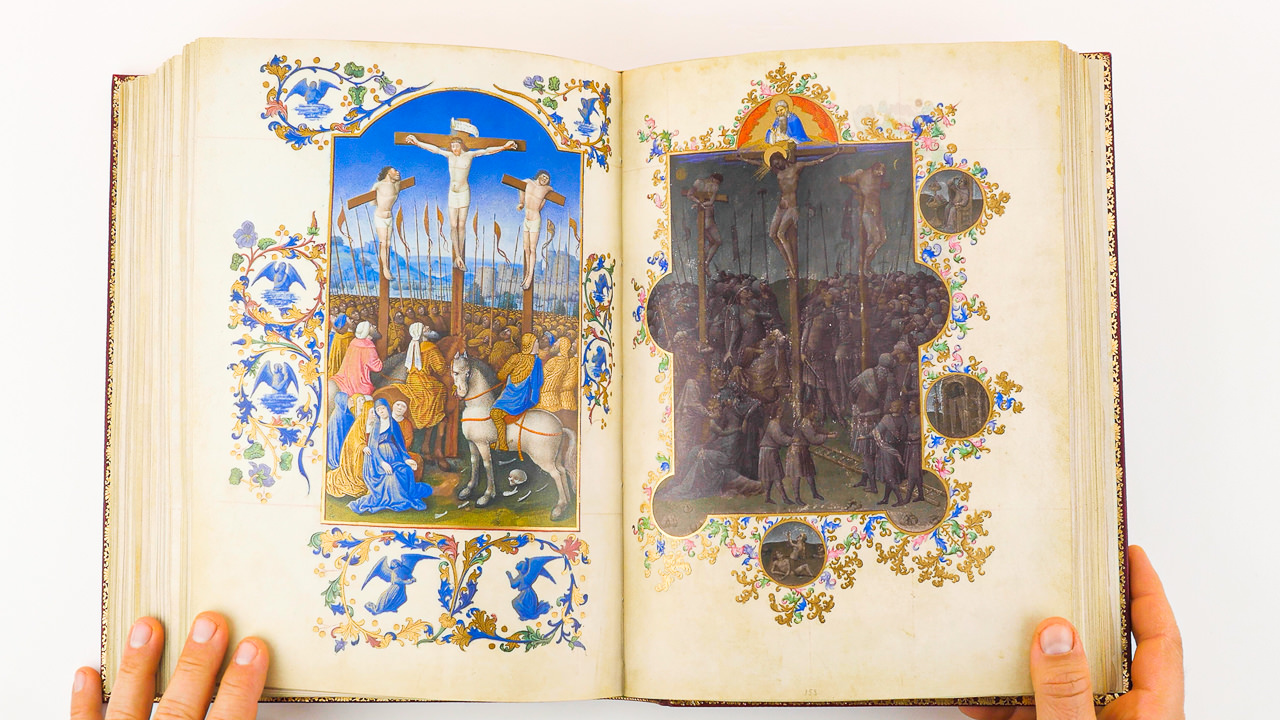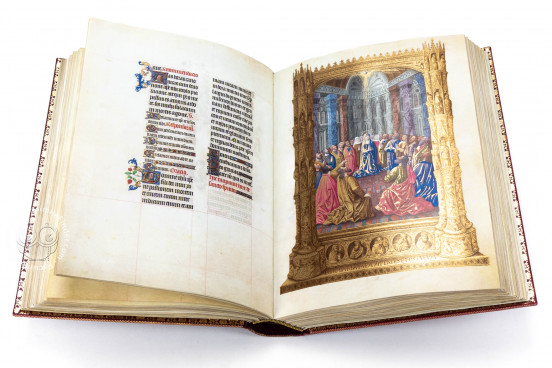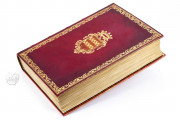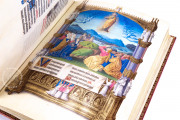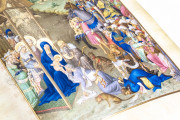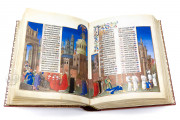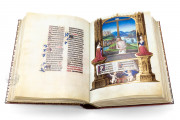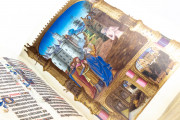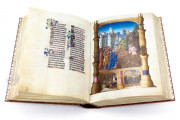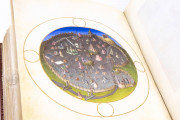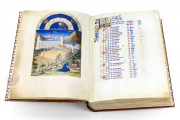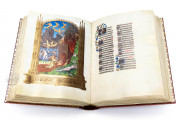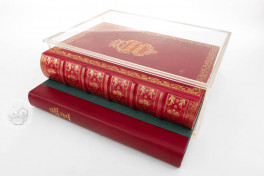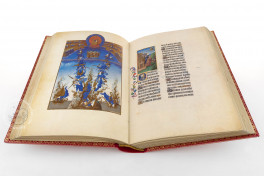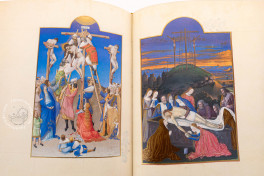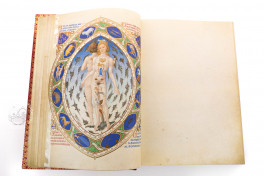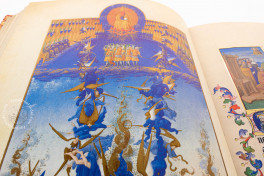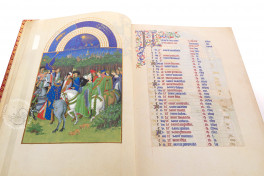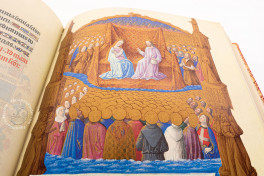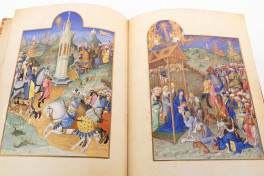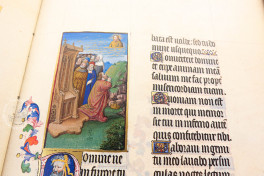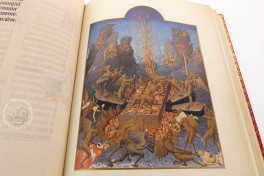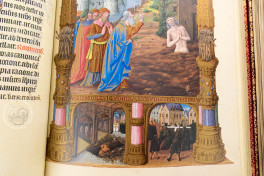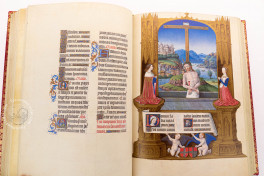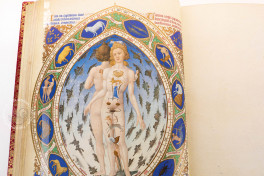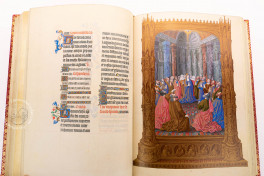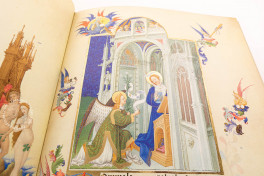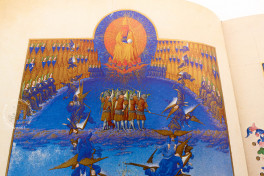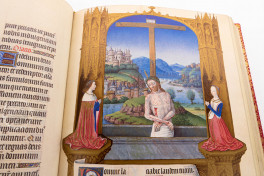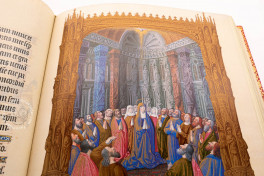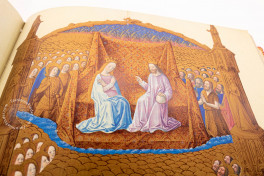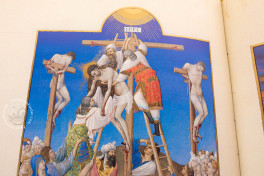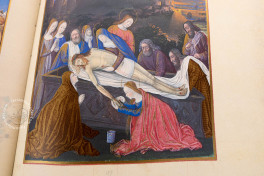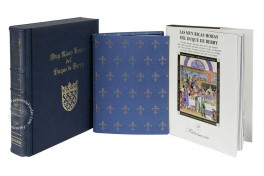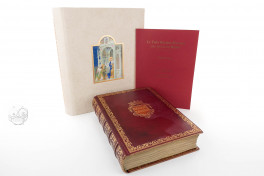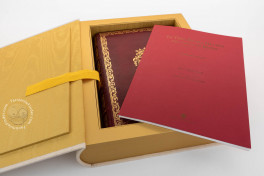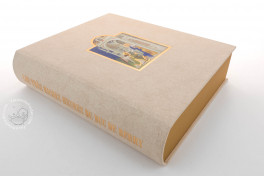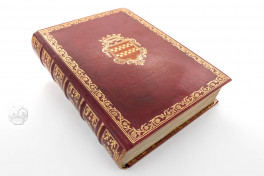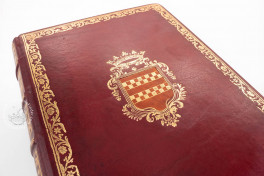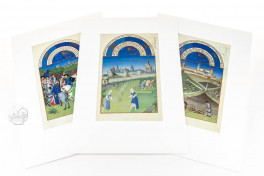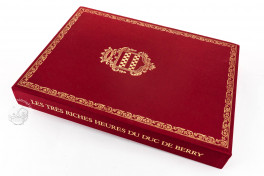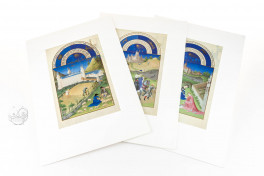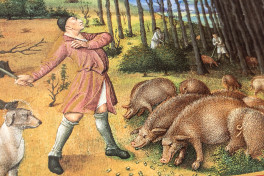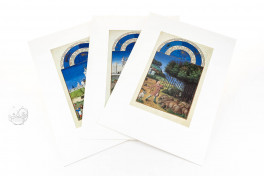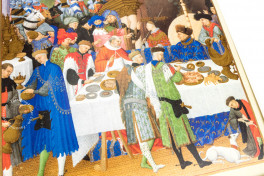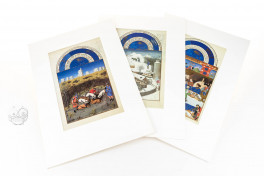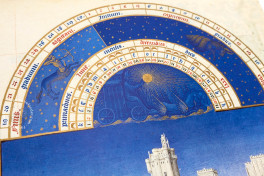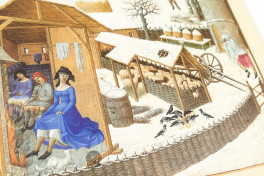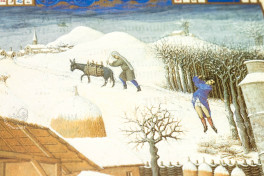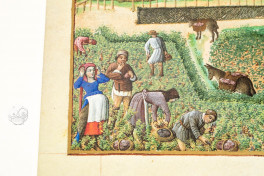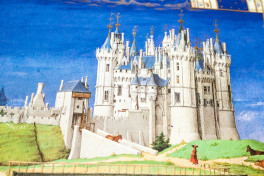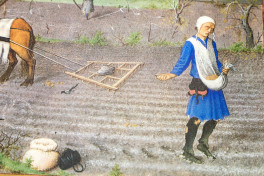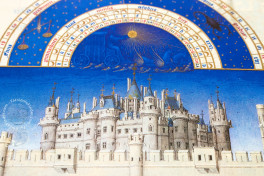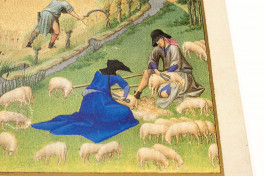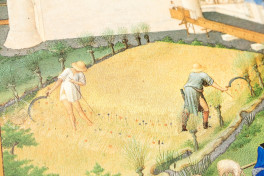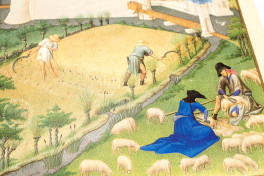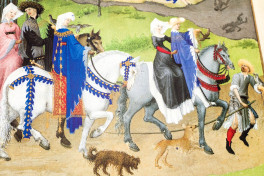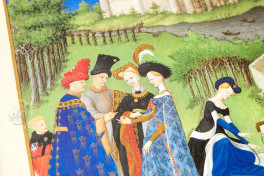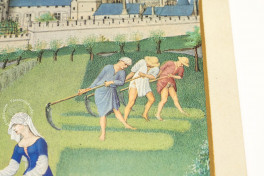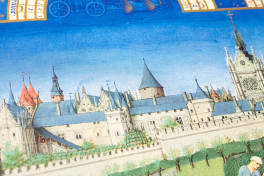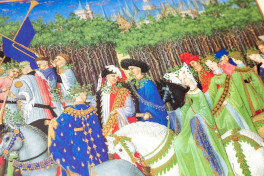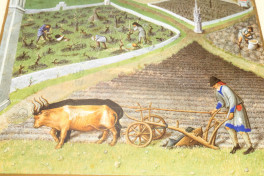With sixty-six large and luminously colored miniatures and nearly as many exquisite small miniatures, painted borders, and hundreds of painted initials, the Très Riches Heures of the Duke of Berry is one of the most famous and familiar illuminated manuscripts of the European Middle Ages. Three generations of supremely talented painters illuminated it in France in the fifteenth century. The book's nickname ("very rich") comes from a description of the then-unfinished book in an inventory compiled in 1416 following the death of its patron, Jean de France, Duke of Berry. The Très Riches Heures facsimile editions allow collectors worldwide to experience the magnificence of this illuminated masterpiece.
The manuscript was illuminated in three phases: the first at the behest of the duke of Berry in 1411-1416, with miniatures, borders, and initials by the Limbourg brothers and others; the second around 1440; and the third around 1485-1485 for Charles I, Duke of Savoy.
Les Très Riches Heures: The Limbourg Brothers and Master Illuminators
Preeminent among the artists who provided the book's consistently high-quality illumination are the Limbourg brothers—Pol, Jean, and Herman—who oversaw the work accomplished during the lifetime of Jean de France. Pseudo-Jacquemart, the Bedford Master, and the Master of the Breviary of Jean sans Peur were among the seventeen painters and four scribes whose work was supervised by the brothers. Plans for the illumination were altered and expanded during their tenure. Modern facsimile reproductions preserve the brilliant colors and details created by these master illuminators.
An illuminator working around 1440, perhaps Barthélemy d'Eyck, contributed to many of the calendar miniatures, all designed and partially painted by the Limbourgs. Jean Colombe was paid in 1485 to complete the illumination; he painted figures and foregrounds of partially executed compositions, whole miniatures designed by the Limbourgs, and initials.
Très Riches Heures Images: Calendar Miniatures and Ducal Splendor
The manuscript's imposing miniatures are the foundation of its worldwide fame. The calendar is extraordinary. Many of its miniatures offer views of the pageantry of aristocratic life, most famously the Duke of Berry's New Year banquet for January (fol. 1v). Les Très Riches Heures du Duc de Berry images showcase the finest examples of medieval manuscript illumination, capturing aristocratic life in exquisite detail. They include portraits of French ducal and royal residences, including the palace at Saumur for September (fol. 9v) and the Louvre in the miniature for October (fol. 10v).
Illustrating Psalm Verses
A remarkable feature is the illustration of dozens of individual psalm verses. In the Office of the Dead, for example, the opening verse of Psalm 24 ("To you, Lord, I lift up my soul") is visualized as a tonsured man kneeling in a chapel and holding up a small naked figure, representing his soul (fol. 91v).
Les Très Riches Heures du Duc de Berry: Book of Hours Content
The manuscript is a book of hours, which has as its core text—as do all books of hours—the Hours of the Virgin, a series of prayer services focused on the Virgin Mary (fols. 26-63). It also includes a liturgical calendar, the Penitential Psalms, the Office of the Dead, and further prayer services often found in books of hours. Unusually, there are votive offices assigned to days of the week and masses.
Beautiful Calligraphy
A single scribe writing Gothic Textualis in two columns (except where the plan for illumination required a single column on fols. 22r and 71v) wrote most of the manuscript's text. A second scribe wrote the text of the calendar (fols. 1-16), and two more also contributed in the 1410s. A fifth scribe, perhaps the illuminator Jean Colombe, supplied two pages of text in the Hours of the Virgin (fols. 52v and 54r).
A Genoese Binding
If the attribution of some of the painting of the calendar miniatures to Barthélemy d'Eyck is correct, the manuscript came early in its history into the possession of René I (1409-1480), Duke of Anjou and King of Naples and Jerusalem. It was certainly in the collection of Charles I (1468-1490), Duke of Savoy, who commissioned Colombe to complete the illumination.
Soon after, Margaret of Austria (1480-1530), Regent of the Netherlands, possessed the manuscript. Gian Battista Serra (1768-1855) and the Spinola family owned it in the eighteenth century. Their coat of arms is on the current red leather binding. Henri d'Orléans (1822-1897), Duke of Aumale, acquired it in Genoa in 1856. He bequeathed his collections to the Institut de France to be housed in the Chateau de Chantilly. Today, the Très Riches Heures remains at Chantilly, while premium facsimile editions make this treasure accessible to collectors and institutions.
We have 4 facsimiles of the manuscript "Très Riches Heures of the Duke of Berry":
- Très Riches Heures du Duc de Berry facsimile edition published by Faksimile Verlag, 1984
- Muy Ricas Horas del Duque de Berry facsimile edition published by Patrimonio Ediciones, 2011
- Très Riches Heures du Duc de Berry facsimile edition published by Franco Cosimo Panini Editore, 2011
- Très Riches Heures du Duc de Berry - Die Monatsblätter des Kalenders facsimile edition published by Faksimile Verlag, 1994

